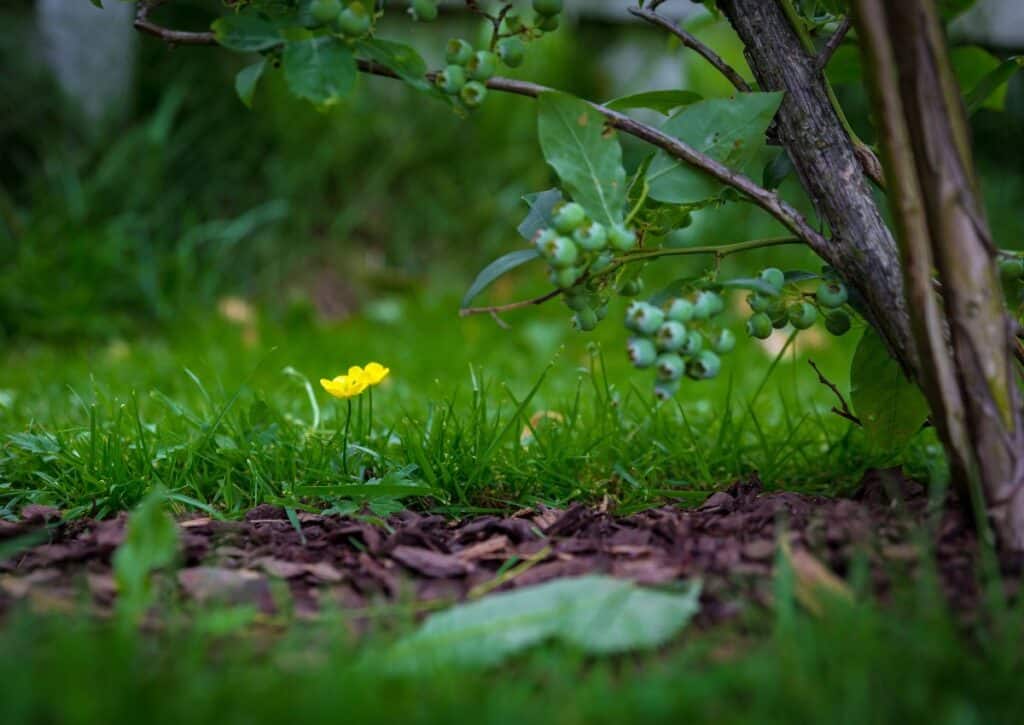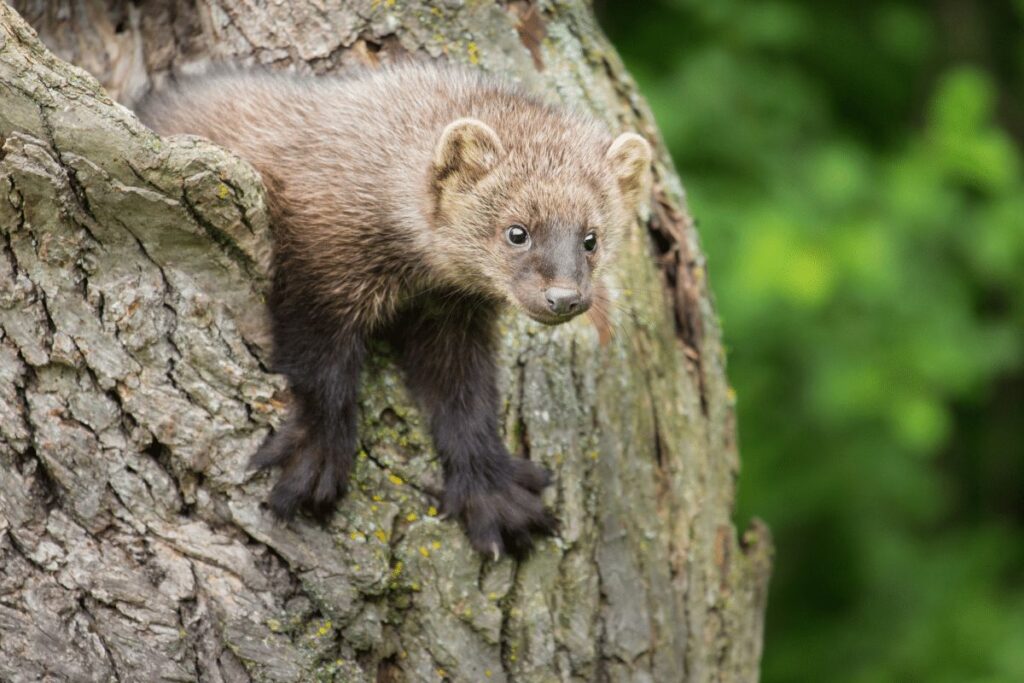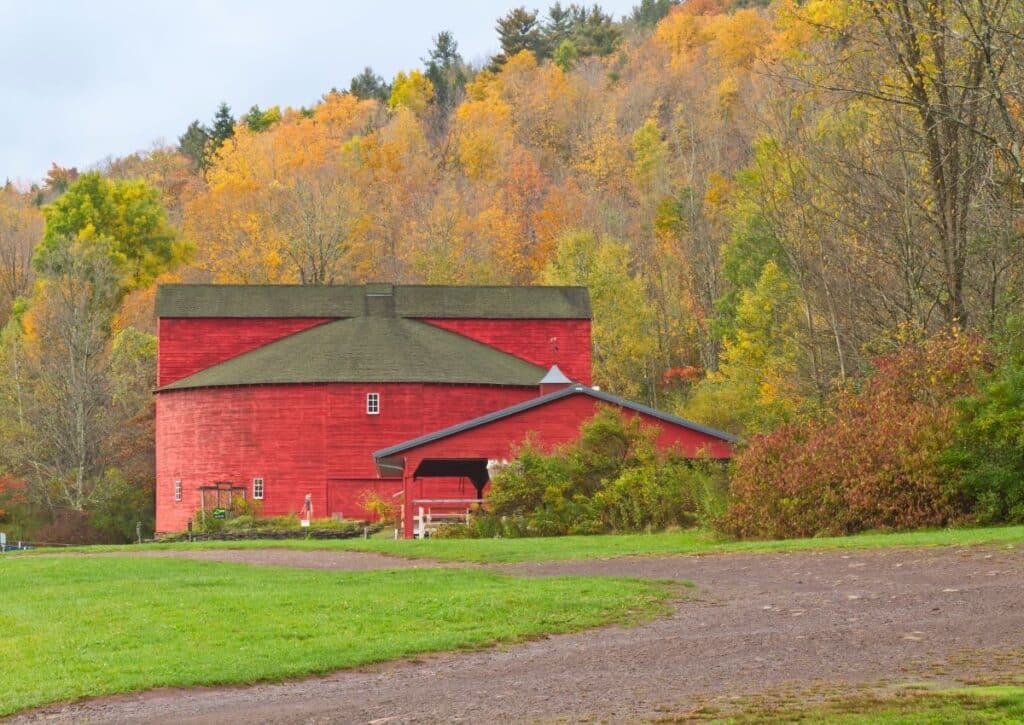Discover diverse plants in the Catskill Mountains with our hiker's guide, covering everything from common sights to edible species for your adventure!
Planning a hike in the Catskills? You’re in for a treat. Just a couple of hours from New York City, the Catskill Mountains offer some of the best trails around.
But it’s not just about the challenging hikes or the panoramic views; the Catskills are home to a vibrant variety of plants that will make your trek even more enriching.
Whether you’re curious about the greenery around you, looking to identify edible plants, or simply want to avoid the itchy ones, this guide has got you covered.
So, lace up those hiking boots and let’s dive into the plant life of the Catskills!
Commonly Seen Plants on Hiking Trails in the Catskills
The majesty of the Catskill Mountains isn’t just in its soaring peaks and breathtaking vistas; it’s also found in the details of its thriving plant life. As you traverse the trails, a rich tapestry of flora awaits discovery, offering both beauty and practical knowledge for those willing to look closely.
Trees: The Pillars of the Forest
The towering presence of trees like the Eastern Hemlock is undeniable. Recognized by its conical shape and drooping branches, it serves as both a shade provider and a home for various wildlife.
The Sugar Maple, a symbol of our northern forests, paints the landscape with brilliant reds and oranges during the autumn months, while also being the primary source for maple syrup.
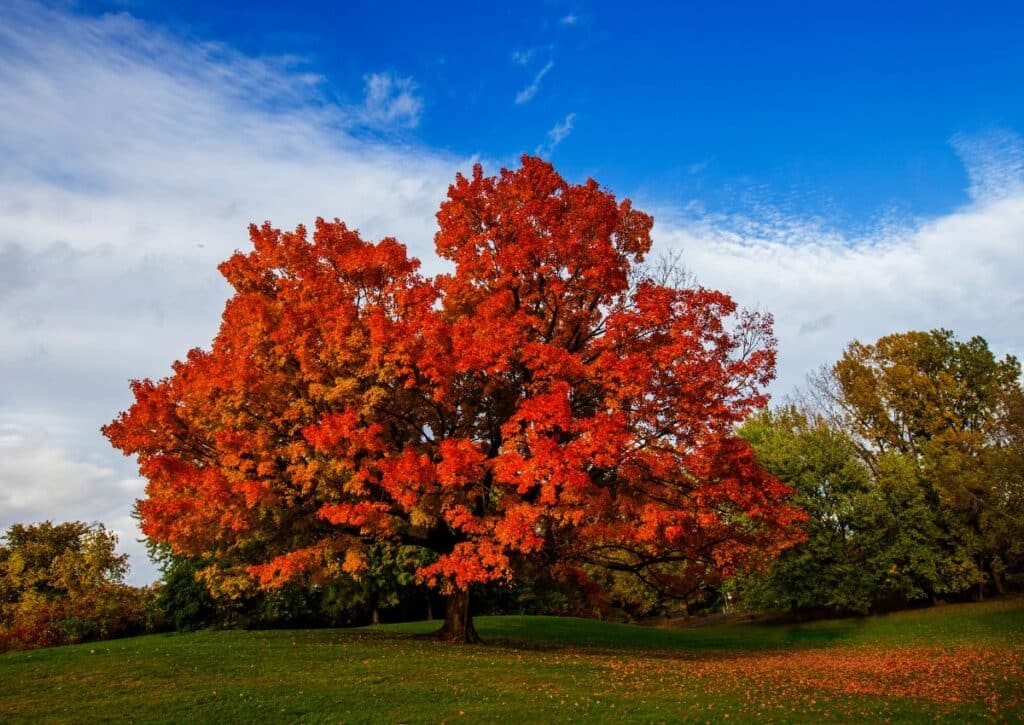
Then there’s the Red Oak, distinguishable by its broad leaves and acorns, which serves as an essential food supply for many animals in the region.
Shrubs and Bushes: Diversity at Mid-Level
Delving into the forest’s middle layers, one encounters a myriad of shrubs and bushes. The Mountain Laurel, characterized by its glossy leaves and intricate flowers, blossoms splendidly in late spring.
Be sure, however, to appreciate its beauty from a distance; it’s toxic if consumed. Blueberry bushes stand as a delightful find, especially when laden with ripe berries during the summer months.
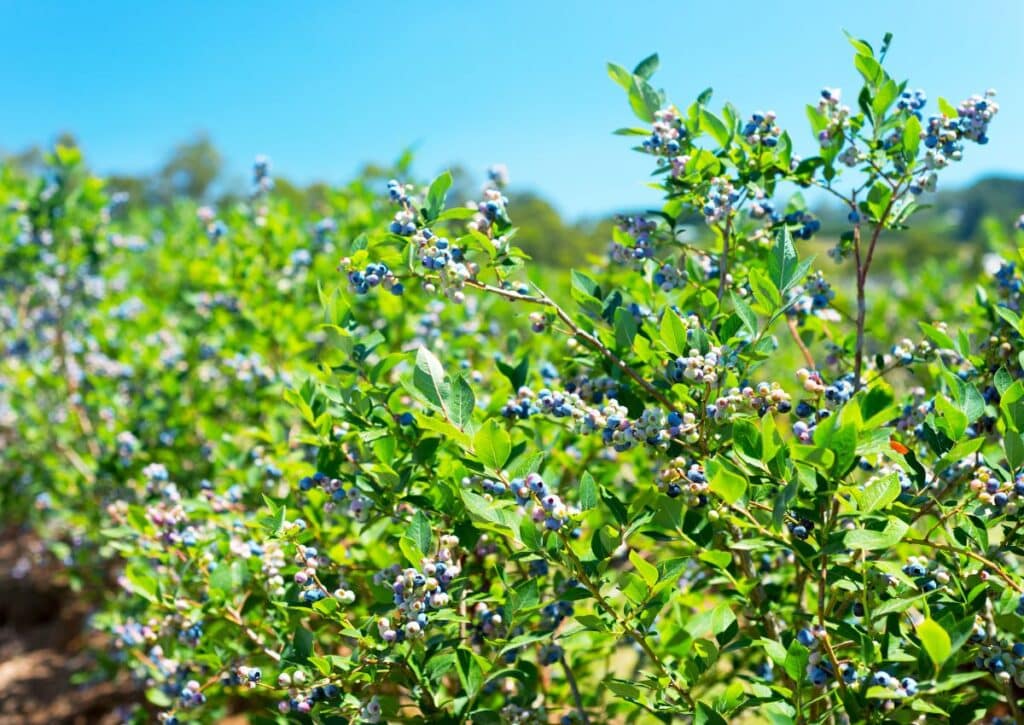
These not only offer a tasty treat for hikers but are a crucial food source for numerous birds and mammals.
Flowers and Ferns: The Forest’s Delicate Touch
The ground layer of the Catskills forest is a world teeming with beauty. Here, you’ll discover flowers such as the Trillium, easily recognizable by its trio of petals, signaling the start of spring.
The rare Lady’s Slipper Orchids, with their shoe-like appearance, are a testament to the region’s botanical diversity. Ferns, with their intricate patterns and varying sizes, abound in the region.
Species like the New York Fern and the Christmas Fern provide lush greenery, particularly in the more shaded, moist areas of the forest.
Safeguarding Your Experience and Their Existence
When immersing oneself in the beauty of the Catskills, it’s essential to approach nature with respect. Ensure you stay on designated paths to protect delicate plant species and minimize human impact.
If the idea of foraging appeals to you, be doubly certain of a plant’s identity before considering consumption; many edible plants have potentially harmful look-alikes.
For those keen on deepening their understanding, consider equipping yourself with a field guide or engaging in a botany-focused hike led by knowledgeable guides. Such endeavors can enrich your experience manifold.
The Role of Conservation
The vibrancy of the Catskills’ flora isn’t just a natural gift; it’s also a testament to ongoing conservation efforts. By adhering to responsible hiking practices and supporting local conservation initiatives, every visitor plays a part in preserving this botanical haven.
Edible Plants in the Catskills
The Catskill Mountains, with their rich biodiversity, have long provided a bountiful source of both food and medicine for those who know where to look. Beneath the canopy of broad-leaved trees and amongst the thick underbrush, a variety of edible plants thrive, offering an adventurous palate a chance to taste the wild.
However, before embarking on any foraging expedition, it’s crucial to be equipped with the necessary knowledge and precautions.
A Word of Caution
Foraging in the wild is like a treasure hunt, with nature’s bounty waiting to be discovered. However, the stakes are high. Misidentification can lead to consuming toxic plants, resulting in illness or even death. Always cross-reference with reliable field guides, or better yet, learn directly from experienced foragers or local experts. Remember, many edible plants have toxic look-alikes, so when in doubt, abstain from consumption.
Berries: Nature’s Sweet Treasures
- Blackberries: Found in sunny, open areas, blackberries are a treat straight from the bush. These juicy, dark fruits usually ripen by late summer. While delicious raw, they’re also great in jams and pies.
- Blueberries: A common sight in the Catskills, these bushes bear small, round berries that turn a deep blue when ripe. Found in both open and wooded areas, they’re a delightful summer snack and rich in antioxidants.
- Raspberries: With their vibrant red color and sweet taste, raspberries can be found in clearings or at forest edges. Their thorny bushes are a tell-tale sign you’re near a treat.
Greens: Fresh From the Forest Floor
- Dandelion: Often dismissed as a weed, every part of the dandelion is edible. Young leaves make for a slightly bitter salad green, while the roots can be roasted to make a coffee substitute.
- Wood Sorrel: This clover-like plant has heart-shaped leaves and a tangy flavor reminiscent of lemon. It’s found in moist, shaded woods and is a refreshing addition to salads.
- Fiddlehead Ferns: These young ferns, with their spiral shape, are a forager’s delicacy. Found in wet, shady areas in early spring, they should be cooked before eating to eliminate potential toxins.
Roots and Tubers: Buried Edible Gems
- Wild Leek (Ramps): These have a strong garlic-onion flavor. Found in wooded areas during spring, they have broad, smooth leaves and a purplish stem. Their bulbs are especially sought after, but it’s crucial to harvest sustainably, taking only a small portion from each patch.
- Jerusalem Artichoke: Despite their name, these tubers have no relation to artichokes. Found in sunny areas, their knobby roots taste somewhat like a nutty potato and can be eaten raw or cooked.
Nuts and Seeds: Forest’s Crunchy Delights
- Walnuts: The black walnut tree produces round, green fruits that house the edible nut. After the outer layer decomposes, the hard, wrinkled nut inside can be cracked open for a rich, flavorful treat.
- Hickory Nuts: These are encased in a hard shell, which, when cracked open, reveals a sweet and buttery nut. Hickory trees are prevalent in the Catskills, making this nut relatively easy to find.
- Pine Nuts: Extracted from the cones of certain pine trees, these small, soft nuts are a delicacy and are often used in cooking for their distinct flavor.
Medicinal Plants: Nature’s Ancient Pharmacy
- Yarrow: Traditionally used to stem bleeding, yarrow has feathery leaves and clusters of white flowers. It’s believed to have multiple medicinal properties, including aiding digestion and reducing fever.
- Goldenrod: Often mistakenly blamed for hay fever, goldenrod is a tall plant with bright yellow flower clusters. Traditionally, it’s been used as a remedy for urinary tract disorders.
- Jewelweed: Recognizable by its orange or yellow trumpet-shaped flowers, jewelweed is a natural remedy for skin irritations, such as poison ivy rashes.
The Catskills, with its diverse plant life, offers a unique opportunity to connect with our ancestral roots of foraging. While the idea of sourcing food from the wild might seem novel in our modern age, with the right knowledge and precautions, it can be both a rewarding and enriching experience.
Always remember to forage sustainably, leaving enough behind for wildlife and future growth. The mountains generously share their bounty, and it’s up to us to ensure it continues for generations to come.
Plants to Avoid in the Catskills
Nature’s beauty, especially in the lush Catskill Mountains, is undeniably inviting. However, while many plants offer nourishment or aesthetic pleasure, others harbor dangers that every hiker should be aware of.
Whether it’s a rash-inducing vine or a toxic mushroom, knowing what to avoid can prevent an enjoyable hike from turning into a painful or even life-threatening experience.
Poison Ivy: “Leaves of Three, Let it Be”
One of the most notorious plants that hikers dread is poison ivy. It thrives in a variety of environments, from sunlit clearings to shaded woods. Its distinct characteristic is its three leaflets, which can be shiny or dull and may have toothed or smooth edges.
In the fall, the leaves can turn a vibrant red. Direct contact with poison ivy releases urushiol, an oily resin that causes a severe allergic reaction in most people. This manifests as an itchy, blistering rash that can last for several weeks.
Poison Sumac: The Swamp Dweller
While less common than poison ivy, poison sumac is far more potent in terms of its skin-irritating properties. It typically grows in wet, swampy areas of the Catskills.
Unlike poison ivy, poison sumac has 7 to 13 leaflets that are arranged in pairs with a single leaflet at the end. Its stems are red, and in the summer, it produces small white or pale yellow berries. Similar to poison ivy, contact with any part of poison sumac can cause a painful rash due to its urushiol content.
Beware of the Mushrooms: Not All Are Friendly
The Catskills, with its moist and shaded woods, offers a perfect environment for a plethora of mushroom species. While many are benign or even edible, some are highly toxic and can be fatal if ingested. Two of the most dangerous mushrooms that hikers might encounter include:
- Destroying Angel (Amanita bisporigera): As the name suggests, this mushroom is deadly. It has a white cap, white gills, a white stem, and a cup-like volva at its base. Consuming even a small portion can be lethal.
- Jack O’Lantern (Omphalotus olearius): These orange-to-yellow mushrooms grow in clusters on decaying wood. While not as deadly as the Destroying Angel, ingesting them can lead to severe gastrointestinal distress.
The rule of thumb with wild mushrooms is clear: unless you are a trained mycologist, it’s best to admire them from a distance and never consume them.
Also Read: 12 ANIMALS IN THE CATSKILLS DURING OUR CAMPING TRIP! (BEST SPOTS AND TIPS INCLUDED)
Leaving Thoughts
The Catskill Mountains, with their vast expanses of lush greenery, rugged terrains, and hidden wonders, invite nature enthusiasts to immerse themselves in a world far removed from urban hustle. From the delicacies of wild berries to the cautionary tales of lurking poisons, the region offers a balanced lesson in the beauty and perils of the wild.
It’s a reminder that while nature is generous, it demands respect. Foraging or merely admiring the flora is not just about what we can take from nature, but also about understanding and preserving its intricate web of life. Armed with knowledge and a sense of adventure, one can truly appreciate the depth and breadth of experiences the Catskills offer.
As you lace up your hiking boots and set out to explore these ancient hills and valleys, carry with you an insatiable curiosity, a vigilant eye, and a deep respect for the land. The Catskills, in their timeless wisdom, will unveil their secrets, ensuring every journey is both enlightening and memorable.

